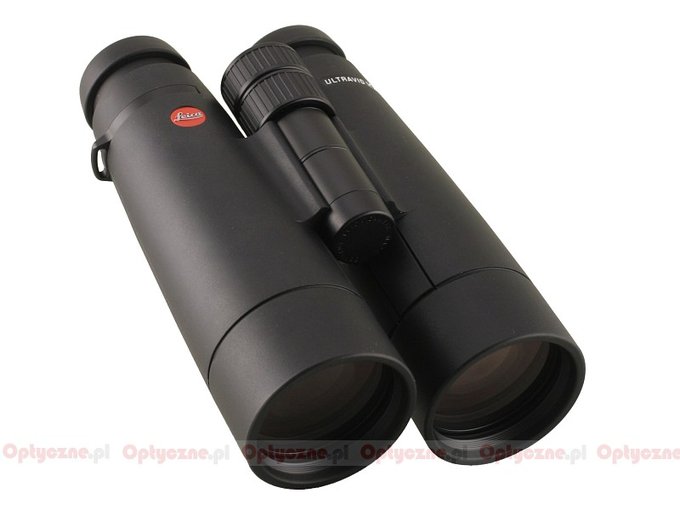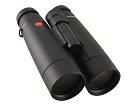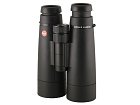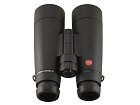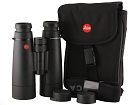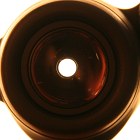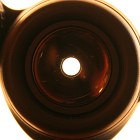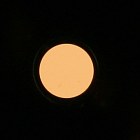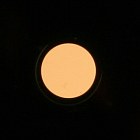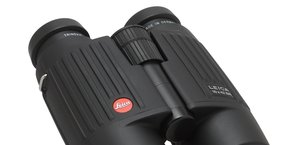Leica Ultravid 10x50 HD
Compared to the previous version, the producer used some fluorite glass in the objective lenses and better antireflection coatings which are supposed to assure the transmission level higher by 3%. What’s more, the outer optical surfaces were covered by AquaDura coatings which task is to make the water roll off very quickly. These coatings also make the cleaning of optical elements easier – the traces of damp, mud or fingerprints are supposed to be very easy to remove. The 10x50 HD model is also supposed to have the field of view wider by 0.1 degree than a normal Ultravid 10x50. Physically, the Ultravid binoculars are not visibly different from each other, what can be clearly seen in the picture below (the older model is on the left, the HD version – on the right).
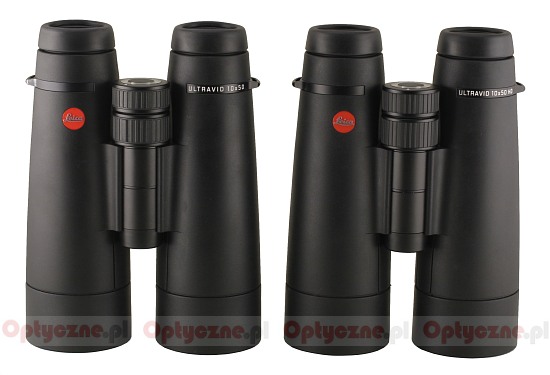 |
The magnesium barrel of the binoculars is covered by soft, matt rubber, which is supposed to guarantee a reliable hold in difficult conditions. Additionally it is waterproof down to a depth of 5 meters and nitrogen-filled. The HD Ultravid devices can be used in the temperature range from –25 to +60░C.
The buyer gets a neoprene strap, a Cordura case, rain guard and caps for objective lenses. The binoculars come with a 10-year-long guarantee.
| Magnification | Lens diameter | Angular field of view | Prisms | Eye relief | Weight | Price |
|---|---|---|---|---|---|---|
| 10 | 50 | 117/1000(6.7o) | BaK-4/roof | 15 mm | 1000 g | 8399 PLN |
Summary
Pros:
- solid and comfortable housing,
- wide field of view,
- high transmission,
- good whiteness rendition,
- sharp image in almost all field of view,
- chromatic aberration quite well corrected,
- negligible astigmatism,
- slight coma,
- not very obtrusive brightness loss at the field edge,
- good work against bright light and low flares,
- good blackening inside the tubes,
- acceptably circular exit pupils,
- high class coatings and prisms,
- good warranty conditions,
Cons:
- distortion is a bit too high.
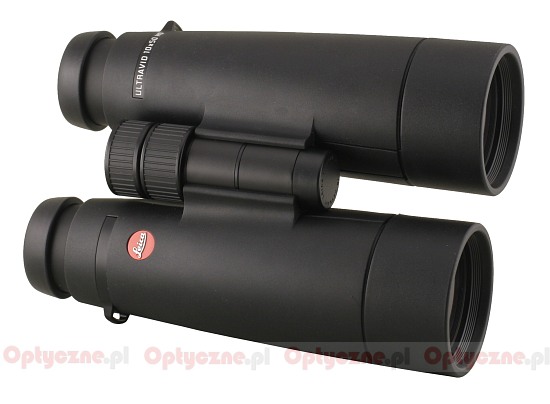 |
The result, achieved by the Leica Ultravid 10x50 HD speaks for itself. It places the binoculars on the leading position of our 10x50 models ranking. We must admit, though, that, compared to the Swarovski or Fujinon, the difference is minimal and well within the margin of error.
Well…we don’t intend to use errors as an excuse here - the Leica clearly deserves such a high place. One thing we can express our reservations about is a bit too high level of distortion. On the other hand, the Leica offers us one of the widest fields of view in its class and that can make the distortion more pronounced. In all other categories the binoculars’ results are high or very high. The tested model’s astigmatism correction especially deserves our recognition – when you look at the stars they are like little pins and the effects are really impressive.
You can praise the Leica for a long time because it would be really difficult to find something we don’t like (of course forgetting about the price for a while). There is a fly in the ointment, though. Testing the Leica Ultravid HD we could compare it with the previous model (withouth the HD symbol). To tell you the truth there was virtually no difference between these models. In case of all optical and mechanical properties they fared the same. Even the degree of aberration correction, which was supposed to be better because of the fluorite glass, remained the same. If any difference occurred, it was minimal. We also haven’t noticed the bigger field of view, which was supposed to be by 0.1 degree wider in the HD version. Within the margin of error, both binoculars gave the same result of 6.6 degrees here.
The transmission, which level was slightly higher, was the only noticeable improvement but the difference was rather symbolic, reaching on average 1-2% for the most of the visual spectrum, only sometimes achieving those promised 3% . In the blue part, both binoculars perform alike, in the middle of the spectrum the new HD model is 1-2% better, on the border of red and infrared the older model fares better than the new one. The AquaDura coatings are the thing that you notice immediately – the new Ultravid HD really doesn’t get dirty so much and is easier to clean.
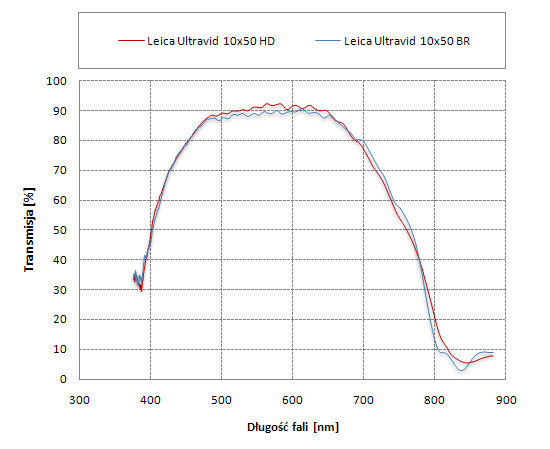 |
It turned out we started to complain too much. It is perhaps not a proper thing to be done in the description of a set of binoculars which won the ranking with over 30 tested models. However, it’s an additional argument for the fact that the old Ultravid was a very well made model and improving its optical properties was a very difficult task.




